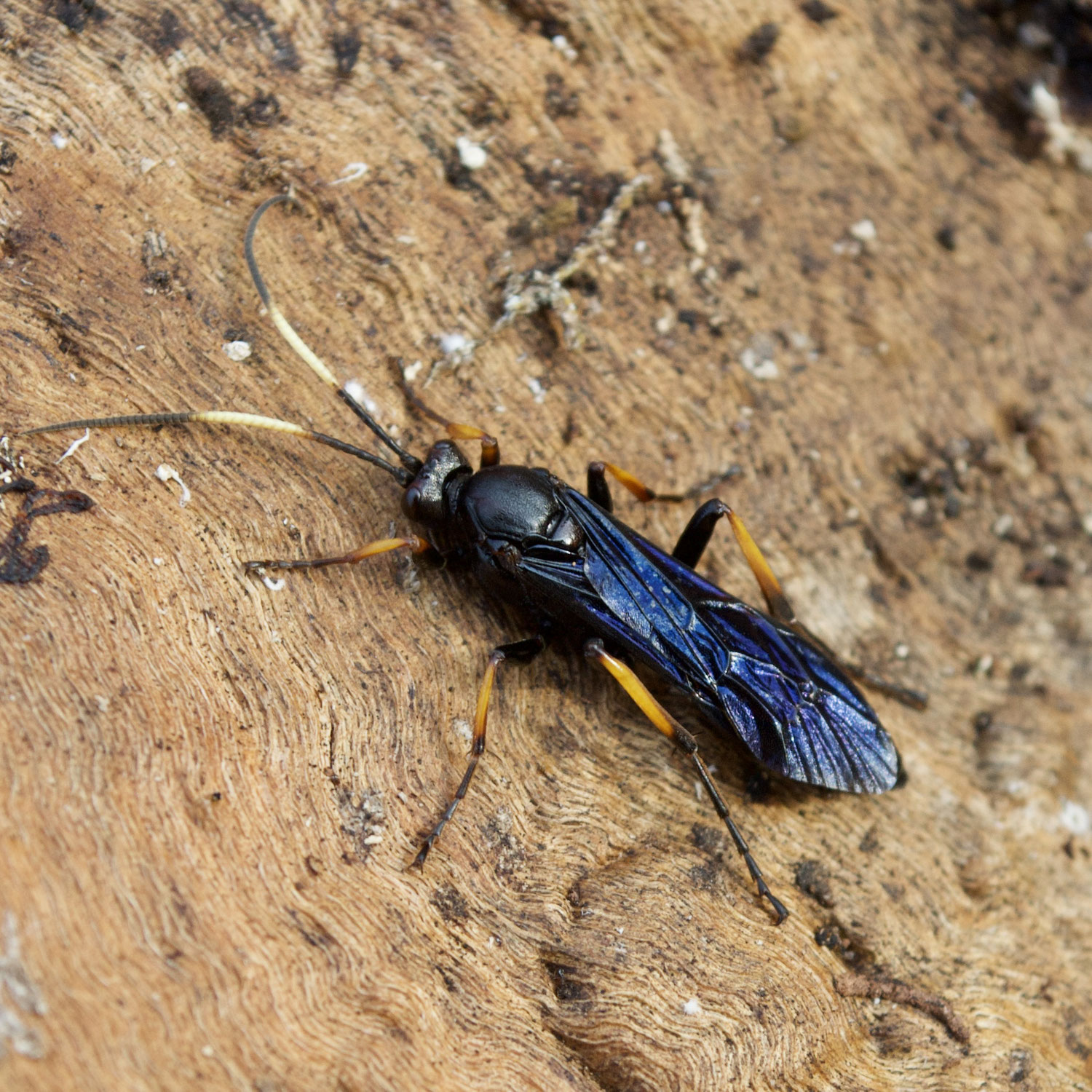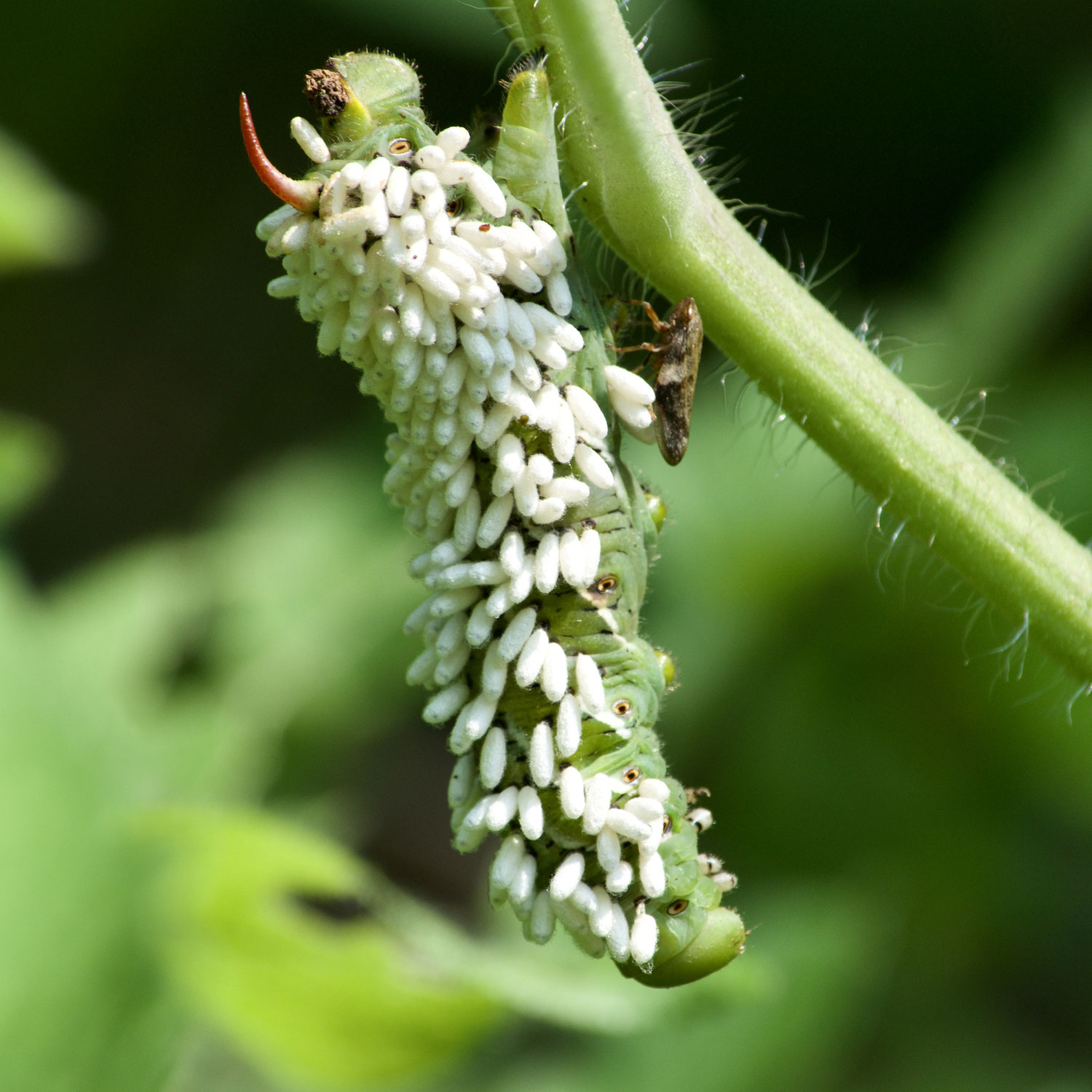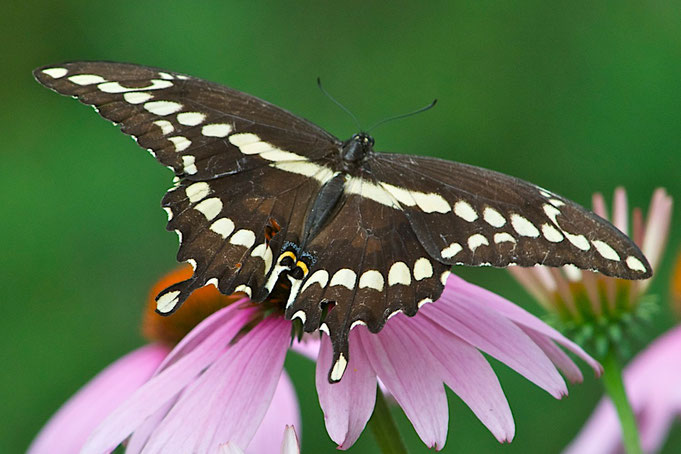insects · November 15, 2014
Female Ichneumon wasp (Ichneumon centrator) hibernate for the winter beneath loose bark of fallen trees, which is where this one was found.
vegetables · November 15, 2014
It is hard to believe that leaving a log or downed tree in the woods might help you grow better vegetables, but it might just be true.
native plant · October 17, 2014
Salidago, commonly called Goldenrod, is a genus of over 100 species of flowering perennial plants in the aster family. The majority are native to North America, with just a few species native to South America and Eurasia. The pollen of Goldenrod is often unfairly blamed for causing hay fever in humans. However, the true culprit is the wind-dispersed pollen of Ragweed (Ambrosia sp.), which blooms at the same time as goldenrod. Goldenrod pollen is too heavy to be easily blown about, with the...
spiders · September 15, 2014
Goldenrod Crab Spider (Misumena vatia) are common on a number of flowers at Distant Hill Gardens. Our Milkweed Meadow is one of their preferred sites for laying their eggs and guarding them until they hatch. This species is a sit-and-wait predator that does not use a web to catch their prey. This one was hiding on a pink Rugosa Rose. Not the best camouflage, but it was still able to snare a bumble bee. Because flowers are their chosen habitat, the majority of their diet includes pollinators...
insects · October 28, 2013
Bees in the family Apidae, made up in part by bumblebees, honey bees, stingless bees, and orchid bees, all posess pollen sacs. The corbicula, Latin for "little basket", is a cavity on the rear legs into which pollen is placed.
insects · August 25, 2013
The Giant Swallowtail (Papilio cresphontes) is the largest butterfly in Canada and the United States. Adults have a forewing span of 4 to almost 6 inches (avg. 5.5 inches) for males and a span of 5 to 7 inches (avg. 5.8 inches) for females. It is an uncommon stray in southern New Hampshire and Vermont, but we have had them here at Distant Hill Gardens for the past two years.
insects · July 15, 2013
Ants are shown here feeding on the nectar and possibly pollinating flowers of Spreading dogbane (Apocynum androsaemifolium). This native bushy perennial grows on the field edges at Distant Hill Gardens. I said "possibly pollinating" because scientists have discovered that many ants secrete a natural substance that acts as an antibiotic. This secretion protects ants from bacterial and fungal infections, but unfortunately this secretion also kills pollen grains rather quickly.
insects · January 20, 2013
All insects change in form as they grow; this process is called Metamorphosis. There are two kinds of insect metamorphosis, simple (or incomplete) and complex (or complete) metamorphosis.
insects · October 19, 2012
The Common Green Darner (Anax junius) is one of the most common dragonflies in North America. Many of them migrate south for the winter, somewhat like the Monarch butterfly. As with Monarchs, the migration in intergenerational. The Green Darner that flies south in the autumn dies, and the next generation makes the trip back north in the spring. Researchers at Princeton and Rutgers Universities tracked 14 Common Green Darners with miniature radio tags in 2006. They discovered that migrating...
Distant Hill was listed as one of the Top 10 Places to Visit in New Hampshire!
Friends of Distant Hill (dba Distant Hill Gardens and Nature Trail) is a nonprofit,
tax-exempt organization under Section 501(c)(3) of the U.S. Internal Revenue Code.
Donations are tax-deductible as allowed by law. Tax ID# 84-3765898
or send a check via Snail Mail to:
Distant Hill Gardens and Nature Trail, 507 March Hill Road, Walpole, NH 03608










